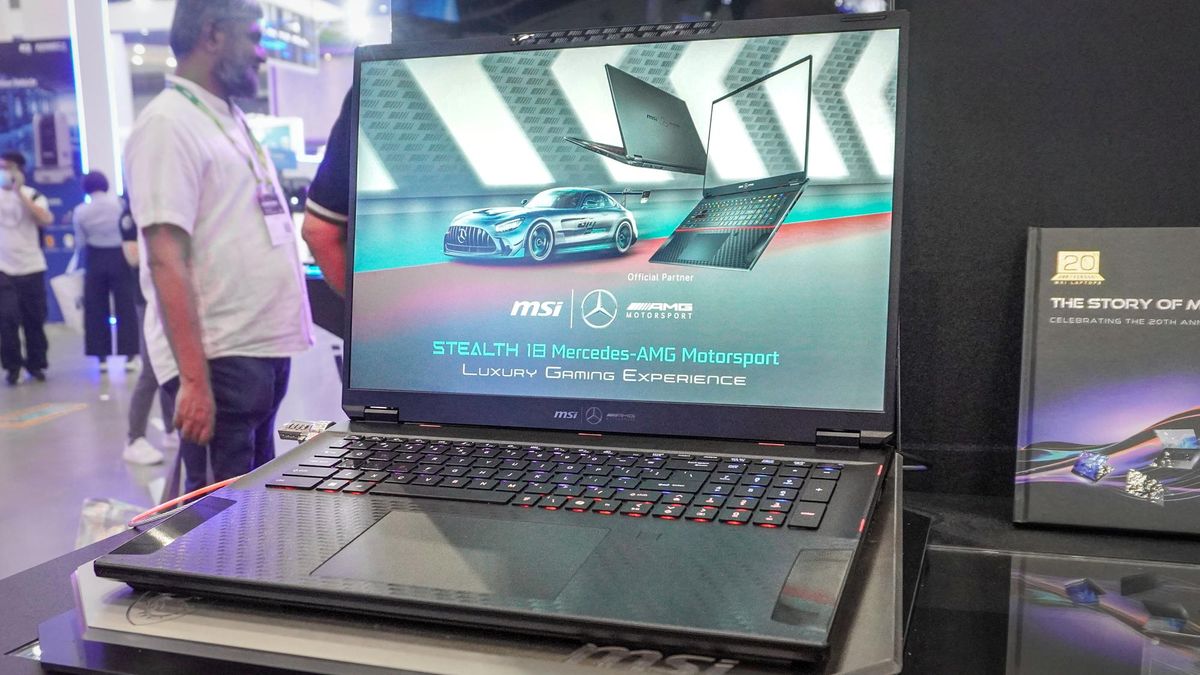



If you surf the web every day, I think it’s a scientific impossibility that you’ve never seen a photo of a quokka before. Often dubbed as “the world’s happiest animal”, there are a metric ton of online snaps out there of this incredibly cheerful macropod (a type of marsupial) that is native to southwestern Australia. And you know what? When I’m playing my Asus ROG Zephyrus G14 (2024), the grin on my face could give even the most upbeat quokka a run for its money. Let me explain why.
The G14 and its larger sibling, the ROG Zephyrus G16 (2024), are the first two OLED gaming laptops to support Nvidia G-Sync, according to Asus. I’ve owned several G-Sync compatible TVs and gaming monitors over the past decade, and Nvidia’s tech is the dictionary definition of “game-changing”. Outside of the graphics card manufacturer’s brilliant AI-enhanced DLSS that can massively boost frame rates, I wholly believe G-Sync is the greatest feature the legendary GPU company has ever developed.
And for my money, I’ve never seen it run smoother or more effectively than on the latest Zephyrus G14’s new OLED “Nebula Display”.
In the G-Sync of an eye

If you’re not quite up to speed on how G-Sync works, let me give you a swift explainer. In essence, this technology synchronizes the refresh rate of your monitor to match the frame rate output of your GPU. The end result? Display stutter is all but eliminated provided you’re dealing with a good PC port, while it also eliminates screen tearing.
If you’re even half as sensitive to fps drops as I am, it’s the absolute best, as at higher frame rates you can easily drop from, say, 100 fps down to 70 fps and barely feel any on-screen inconsistency.
The only slight bummer where G-Sync or AMD’s similar FreeSync can’t swoop in Superman-style to save the day is when it comes to shader compilation stutter. This is a hugely distracting defect that occurs in select PC games that don’t compile their shaders before a title boots from the main menu, resulting in extremely noticeably on-screen hitches. Sadly, it’s a problem that has become increasingly common with Unreal Engine 4 games, like the PC version of Star Wars: Jedi Survivor, which still hasn’t been fixed a full year after release. But that’s on the individual studios, and in no way Nvidia or AMD’s fault.
The smoothest operator

After owning Asus’ new 14-inch wonder for a couple of weeks now, I’m more convinced than ever that the combination of an OLED display and Team Green’s frame rate-smoothing display tech is the best marriage since Elizabeth and Will got hitched by a recently resurrected pirate in the midst of a colossal sea battle involving an extremely Scottish octopus outlaw during the absurd climax of “Pirates of the Caribbean: At World’s End”.
That said, enabling G-Sync on the G14 out of the box isn’t as idiot-proof as it should be — and bear in mind, this incredible portable PC is our current top pick as the best gaming laptop you can buy. That’s because the laptop doesn’t always automatically default to the RTX 4070 GPU that’s housed in my particular model. Instead, it sometimes switches to the machine’s weedy integrated graphics solution unless you specifically set the Nvidia Control Panel to always opt for the Nvidia card.
If you’ve recently bought either the new ROG Zephyrus G14 or G16, here’s a handy guide on how to turn on G-Sync on a gaming laptop.
Dream team

At this point, it’s hardly a Darth Vader “I’m your pappa” level spoiler to say OLED displays are hands down the best in the biz. The screen tech which produces perfect black levels and stunning contrast is still exclusively manufactured by LG Display out of South Korea, then sold to companies like Sony, Panasonic and top quality monitor makers like Dell who go onto implement their own features.
OLED’s closest rival? That would be the best mini-LED displays. And thanks to these screens vastly increasing their number of dimming zones over the past few years, the inky blacks they can produce have never been closer to “OLED quality”.
Make no mistake, though: OLED panels remain the undisputed rulers when it comes to both the best TVs and the best gaming monitors. And honestly? Perhaps outside of the jaw-dropping Tandem OLED screen of the M4 iPad Pro, I can’t think of a Macbook, iPad or laptop that sports such a stunning screen.
Thrown in the buttery brilliance of G-Sync that makes the best Steam games an absolute delight to play, and Asus and its other laptop rivals are going to have to pull quite the technologically savvy rabbit out of their hats to top the ROG Zephyrus G14 over the next 12 months.










